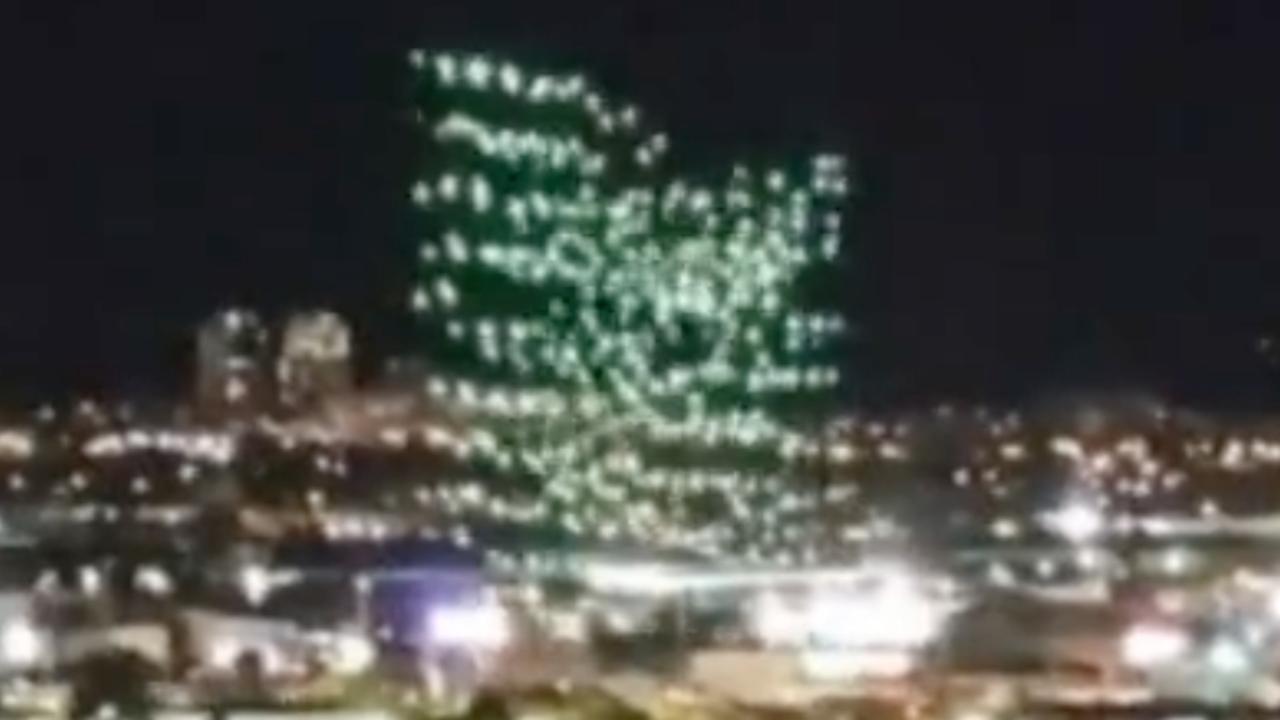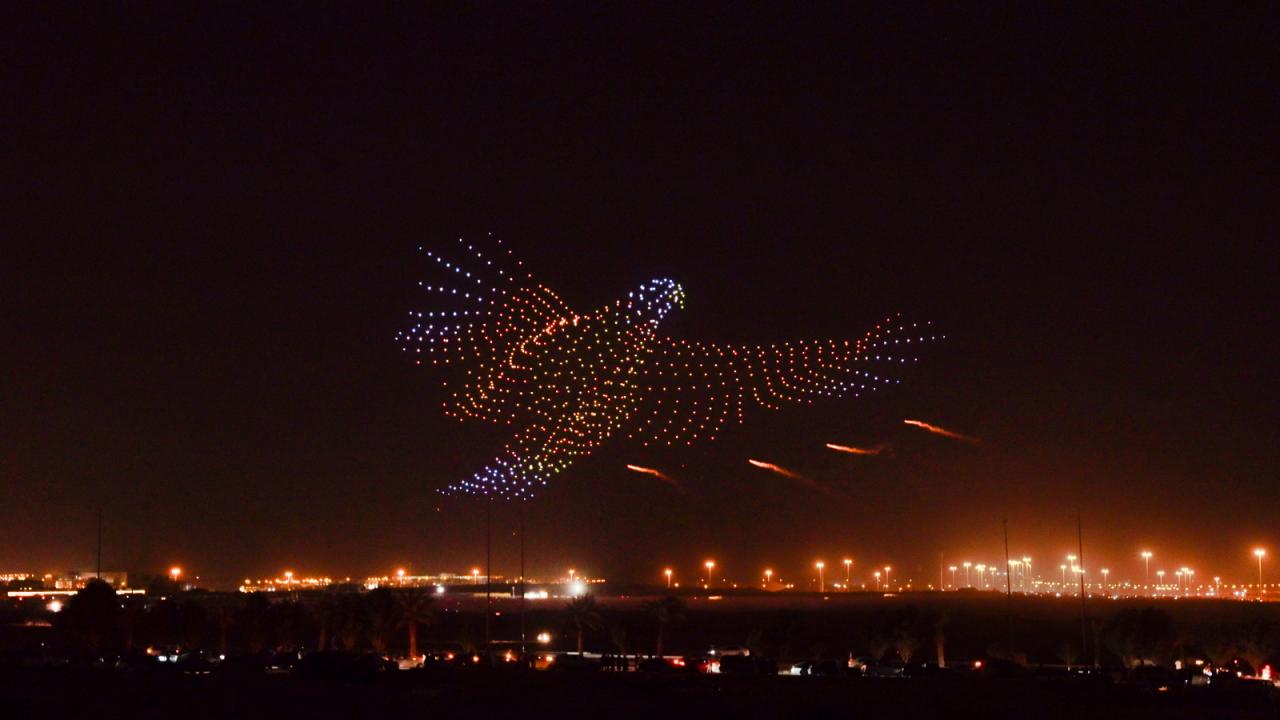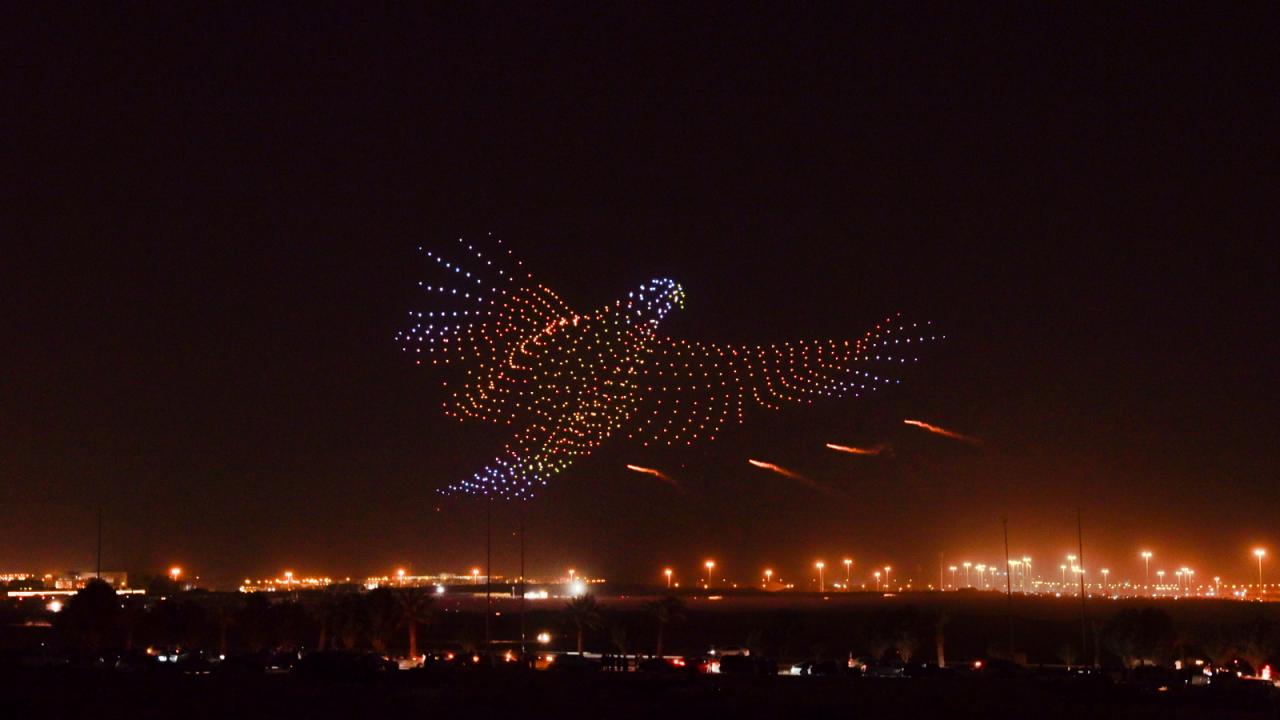Orlando Drone Show Malfunction: A spectacular drone show over Orlando recently took an unexpected turn, captivating audiences not for its intended artistry, but for a dramatic malfunction. This incident raises crucial questions about safety protocols, technological reliability, and the evolving landscape of drone entertainment. We delve into the specifics of this event, examining the contributing factors, analyzing the aftermath, and exploring potential improvements for future drone displays.
This analysis will cover the event details, the nature of the malfunction, safety and regulatory implications, a technological and operational review, and finally, public reaction and media coverage. We aim to provide a comprehensive understanding of this incident and its broader implications for the drone industry.
Orlando Drone Show Malfunction: A Comprehensive Analysis
This report details a recent drone show malfunction in Orlando, examining the event’s circumstances, the nature of the malfunction, safety and regulatory aspects, technological and operational analysis, and public reaction. The analysis aims to understand the contributing factors and propose recommendations for improving safety protocols in future drone shows.
Event Details and Circumstances

A drone light show, scheduled for October 27th, 2024, at Lake Eola Park in Orlando, Florida, experienced a significant malfunction. The show, organized by “SkyCanvas Displays,” was expected to feature a complex choreography of hundreds of drones, creating various illuminated patterns in the night sky. Precise technical specifications of the drones used were not publicly released, but reports suggest they were commercially available models capable of GPS-guided autonomous flight and equipped with LED lights for visual effects.
The malfunction occurred approximately 15 minutes into the show, during a sequence designed to depict a complex, rapidly changing pattern. Initial reports indicated a loss of synchronization among a significant portion of the drones.
The malfunction unfolded rapidly. Initially, several drones began exhibiting erratic flight patterns, deviating from their programmed paths. Within seconds, these erratic movements escalated, with some drones colliding mid-air and others performing uncontrolled descents. The show was immediately halted, with the remaining drones returning to their designated landing zones. The entire incident lasted approximately 3 minutes.
| Drone Model | Number of Drones | Nature of Malfunction |
|---|---|---|
| (Unspecified Commercial Model) | ~300 | Loss of Synchronization, Mid-air Collisions, Uncontrolled Descents |
Nature of the Malfunction
The primary cause appears to be a combination of factors. While a definitive cause hasn’t been officially released, preliminary investigations suggest a potential software glitch within the central control system, coupled with interference from unexpected weather conditions (high winds were reported). The visible effects included erratic, uncontrolled movements, mid-air collisions resulting in several drone crashes, and the complete loss of formation and planned patterns.
The malfunction’s severity was amplified by the large number of drones involved; the cascading effect of one drone’s malfunction impacting others highlights the vulnerability of large-scale synchronized drone displays.
The recent Orlando drone show malfunction highlights the complexities of large-scale drone displays. One wonders if the reliability issues experienced might have been mitigated by utilizing a different drone system, perhaps one like those offered by sky elements drones , known for their advanced technology and safety features. Ultimately, the Orlando incident underscores the need for robust and dependable drone technology in these spectacular, yet technically demanding, performances.
This incident is comparable to a similar event in Dubai in 2022, where a large-scale drone show experienced a partial system failure due to a combination of software bugs and communication interference. Both incidents highlight the need for robust redundancy and error-handling mechanisms in drone show control systems.
A possible sequence of events leading to the malfunction can be visualized as follows (description only):
1. Initial software glitch within the central control system.
2. High winds cause slight deviation in drone flight paths.
3.
Loss of precise GPS data in some drones.
4. Communication interference amplifies the initial software issue.
5. Cascading effect: one drone’s malfunction impacts neighboring drones.
6. Multiple mid-air collisions. 7. Emergency shutdown protocol activated.
Safety and Regulatory Aspects, Orlando drone show malfunction
While SkyCanvas Displays reportedly had safety protocols in place, including emergency shutdown procedures and designated landing zones, these protocols appear to have been insufficient to completely mitigate the effects of the malfunction. No injuries or significant property damage were reported, however, the close proximity of spectators to the malfunctioning drones raises concerns about the adequacy of the existing safety measures.
The Federal Aviation Administration (FAA) and potentially local authorities are investigating the incident, examining adherence to regulations governing drone operation and the effectiveness of the safety protocols implemented.
- Implement more robust redundancy in the drone control system.
- Develop improved algorithms to handle unexpected weather conditions.
- Enhance emergency shutdown protocols to minimize the risk of mid-air collisions.
- Increase the buffer zone between the drones and spectators.
- Conduct more rigorous pre-show testing and simulations.
Technological and Operational Analysis

The malfunction likely stemmed from a combination of technical and operational factors. Possible technical causes include software bugs in the flight control software, hardware failures in individual drones, or communication disruptions between the drones and the ground control station. Operational procedures, including flight planning and emergency protocols, may have also played a role. For example, the rapid changes in flight patterns during the malfunctioning sequence could have increased the risk of collisions.
The drones’ flight control systems, likely relying on GPS and inertial measurement units (IMUs), may have experienced failures in data processing or communication.
Visual representation of flight path (description only): Before the malfunction, drones followed a precise, choreographed path. During the malfunction, a portion of the drones deviated erratically, creating chaotic trajectories. Some drones collided, while others performed uncontrolled descents. After the malfunction, the remaining drones returned to their designated landing zones in an orderly fashion.
Public Reaction and Media Coverage

Public reaction to the malfunction was mixed. Social media was flooded with videos and comments, ranging from awe at the spectacle to concern about safety. News coverage varied in tone, with some outlets emphasizing the spectacular nature of the event, while others focused on the safety concerns raised by the incident. The impact on the reputation of SkyCanvas Displays and drone technology remains to be seen, but the incident undoubtedly raised questions about the safety and reliability of large-scale drone shows.
| Source | Headline | Key Point |
|---|---|---|
| Orlando Sentinel | “Drone Show Chaos at Lake Eola” | Highlights safety concerns and eyewitness accounts. |
| Local News Channel | “Spectacular Drone Show Ends in Malfunction” | Focuses on the visual aspects but acknowledges the malfunction. |
| Social Media (Twitter) | Various user posts | Mixture of excitement, concern, and humor. |
The Orlando drone show malfunction serves as a stark reminder of the inherent risks associated with large-scale drone operations. While technological advancements continue to push the boundaries of what’s possible, ensuring robust safety protocols and thorough operational procedures remains paramount. The incident highlights the need for continuous improvement in drone technology, operator training, and regulatory oversight to mitigate future risks and maintain public confidence in drone shows as a form of entertainment.
Query Resolution: Orlando Drone Show Malfunction
What type of drones were involved in the Orlando drone show?
Specific drone models will need to be researched and added here.
Were there any injuries reported as a result of the malfunction?
This information will require further investigation and should be included here.
Reports of an Orlando drone show malfunction surfaced recently, raising concerns about the technical aspects of such large-scale productions. Understanding the complexities involved is crucial, and further investigation into the incident is warranted. For a better understanding of the overall planning and execution of these events, you might find the details of a similar, yet successful, show helpful; check out information on the orlando drone show to see how these displays are typically managed.
Hopefully, analyzing both successful and malfunctioning shows will lead to safer and more reliable future drone displays.
What is the estimated cost of the damage caused by the malfunction?
Determining the financial impact requires additional data and will be added here.
The recent Orlando drone show malfunction, where several drones failed to perform as expected, highlights the complexities of large-scale drone operations. This incident underscores the need for robust technology, much like the sophisticated drones involved in the recent ukraine drone attack on russia , which showcased both the potential and the inherent risks of drone warfare. Ultimately, the Orlando mishap serves as a reminder of the importance of rigorous testing and safety protocols for all drone deployments, regardless of scale or purpose.
What actions are being taken to prevent similar incidents in the future?
This section should detail any official responses or planned changes in safety regulations or procedures.
